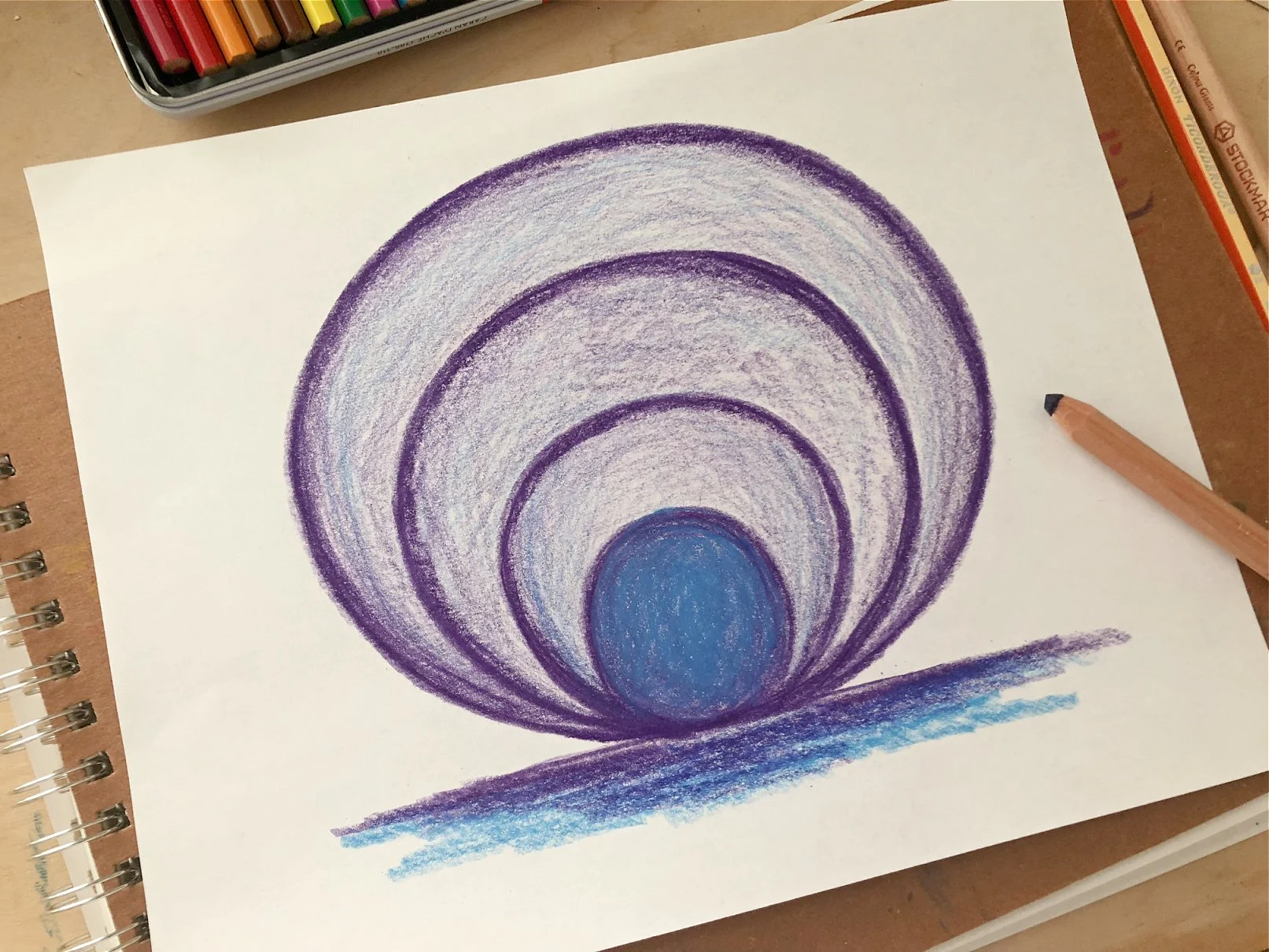How Should I Schedule Our Waldorf Form Drawing Lessons?
Q: How should I schedule our Waldorf form drawing lessons?
(This post is part of a series in which we answer the most common questions we receive in our inbox re: homeschooling, Waldorf curriculum/pedagogy, and whatever else comes our way! Click here to read more from the series!)
A: Form drawing is a subject found in Waldorf schools, generally first through fourth grade (to learn more, click here!) It combines drawing, movement, balance, handwriting skills, and so much more, and is a foundational aspect of Waldorf curriculum in the lower grades.
When it comes to making form drawing part of your homeschool schedule, we encourage you to take a different approach than one would take with other subjects. Instead of doing a “block” format, where one subject is studied each day for a three or four week period, form drawing is best done as a daily practice.
Why do we suggest this different approach of daily practice vs. a block schedule?
Form drawing requires practice and time, and shorter but more regular practice sessions truly allows the various forms (and the processes to create them!) an opportunity to deeply integrate into the child’s body and soul.
Now, this doesn’t mean that form drawing should take a lot of time out of your daily routine- on the contrary! Somewhere around ten to fifteen minutes of daily form drawing practice is the perfect amount of time- not so short that it feels quick and rushed, and not so long that it feels drawn out and as if time is being taken away from the other studies of the day.
Enjoy form drawing in many settings and with different materials- adding variety only deepens the experience for the child!
We know that making something a daily practice can sound a little daunting at first, but over the years (and a lot of trial and error!), we know one thing for sure: habits don’t make themselves!
To really make something a part of your daily practice, put it on the calendar, follow through, and be intentional. Soon, the routine will become second nature, and you will truly reap the benefits that rhythm provides.
Think of form drawing practice like math practice.
If multiplication tables are practiced on a daily basis just for a few minutes, a child will master them far quicker and with deeper mastery than if they were to revisit them only every few months. It’s the same thing with form drawing!
So, no need to get overwhelmed at the prospect of teaching a full form drawing block. Strive for regular, meaningful and efficient practice throughout the school year, and we’re confident that you’ll be amazed at how quickly your child grows in their abilities.
Enjoy!
About the Authors
Robyn Beaufoy is Waldorfish’s CEO, and also a course instructor for Simple Season (coming soon!), Waldorf Art for Beginners, and Weekly Art Foundations. You’ll find her intuitive touches and influences throughout everything Waldorfish offers. Robyn has been in the world of education for over 25 years, with an MA in Education and a certification in Waldorf teaching - she also homeschooled both of her children for some of that time. In 2012 Robyn co-founded Waldorfish.com, creating it with the vision of making Waldorf inspired-art and pedagogy more accessible, joyful, and doable for homeschoolers all over the world.
Caitlin Amajor is Waldorfish’s course instructor for Geometry grades 5 & 6, and Botany, as well as our Administrative Assistant. From a young age, Caitlin has been immersed in Waldorf education, attending a Waldorf school from K-8. After receiving a BA in History, Caitlin gained her certification in Waldorf teaching, and spent seven years as a Waldorf class teacher in the upper grades. With a special fondness for watercolor painting and geometry, Caitlin loves bringing Waldorf education to her students all over the world, and seeing their own individuality and style bloom from the curriculum!





